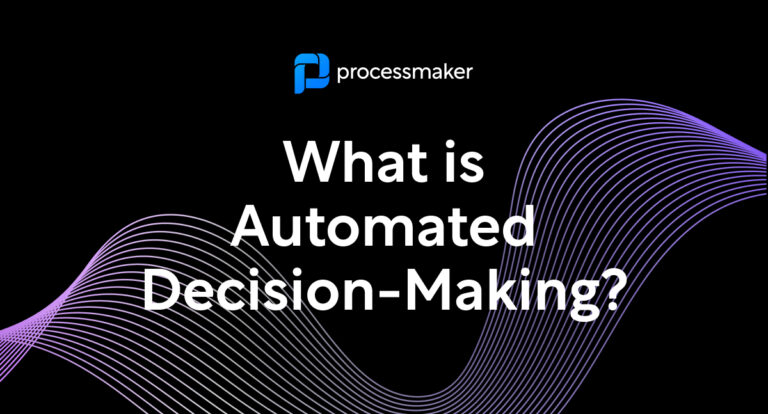
Today, more and more businesses are looking to Robotic Process Automation (RPA) to reduce costs and increase efficiencies.
“The impact it is having on organizations already deploying the technology is proven, and a simple search will show consistent media coverage of this,” says Mihai Badita, a leading expert in RPA.
Not only is interest growing, but the technology itself is evolving at a fast pace. Mihai says to look for RPA to converge with Artificial Intelligence technology.
“The buzz formula is Intelligent Process Automation, IPA for short, and it involves adding to RPA the capability to work with unstructured data: written natural language; image and speech recognition; and to transform it into structured data that can be automated,” he adds.
The business development manager at UiPath, an advanced technology provider for the RPA industry, recently checked in with us to share more of his insight on how businesses can deploy automation to improve workflow – and ultimately, the bottom line. Here’s what he had to say:
What processes should businesses consider automating?
As a general principle, just as human work evolves with new forms, so is technology gradually refined as an instrument. The two push each other forward.
Basically, any business process that involves computer-centric, rule-driven, high-volume clerical tasks is prime for robotic automation.
Currently, the technology is mostly employed in industries such as Banking and Finance, Insurance, Healthcare, and Utilities. There are many “cross-industry” functional processes such as payrolls, onboarding, accounts payable, order management, invoicing, and customer support, just to name a few. These are some of the best candidates for robotic software automation.
How does robotic automation work?
By definition, RPA refers to the use of software “robots” that are trained to mimic human actions on the user interface of applications and then reenact these actions automatically. Robots act as virtual FTEs; they run existing applications just as a human would.
At UiPath, we use a process designer that is highly intuitive and visual in nature, and business users can train the robots like they would train a respective colleague – without having to be IT savvy or writing code.
What are the benefits of automation?
The benefits of RPA are compelling. In terms of costs, consider that an RPA robot costs a fraction of the cost of a human worker. Consider also that a virtual FTE works without a break, 24 hours a day, 365 days a year.
Aside from the obvious monetary gain, there are other notable benefits that could be seen as strategic triggers to expand the business.
At UiPath, we just launched a new line of products with enhanced capabilities; and one of these is the UiPath Server, a scalable robotic process automation platform designed for the enterprise. It offers an integrated automation solution that allows you to manage thousands of robots and processes from a single web-based command center. And everything the robots do – every process – is centrally logged and ready to be aggregated into powerful analytics. This gives you remarkable, unprecedented insight into your business processes; correlations are revealed, which act as actionable insights and triggers for operational improvement.
Aside from reporting and analytics, scalability is another advantage that a technology like ours is able to deliver. Add near-zero error rates and reduced process cycle times and you can see how RPA becomes a sure bet.
What are the most common barriers to robotic automation within an organization?
Often, the biggest challenge is the decision of whether to adopt or not. Some organizations are less willing to adopt early and prefer to wait for the market to mature. Or maybe they are willing to adopt, but they have difficulties evaluating which automation solution best fits them and what is required to move forward. Other times, the problem is internal synchronization. Stakeholders need to get on the same page and support the decision, and employees and the IT department should be briefed. A launch plan should be put in place to ensure smooth implementation.
I could go on, but the point is that resistance to employing RPA is mostly due to the technology’s relatively new arrival to the business world. People have a natural tendency to be resistant to change. However, with RPA the case might be the opposite: it is such eye candy and the benefits are so appealing that organizations might jump on board an RPA deal without a thorough plan.
What considerations do companies need to make when switching to automated processes?
Organizations should make well-informed decisions when deploying RPA because clearly one solution does not fit all. Choosing the right software is paramount. Organizations will want to go for software that is easily integratable with applications and databases across multiple systems and third-party systems like SAP and Citrix. What’s very important, and something not many RPA providers can promise to deliver is a software that is Industry Standard and Enterprise Ready. This means that it should conform to global IT and security changes and that it is easy to implement, manage and scale according to prospective needs. UiPath has state-of-the-art solutions for SAP automation and Citrix automation.
Also, look for software that delivers an intuitive user experience. It’s automation, but robots are also needed to act as automated assistants working alongside humans. Overall, employees need software that they can learn to use fast and rely on long term. Scalability is also a must-have when choosing the software provider. This is critical if you want to seamlessly move up in the future with automation further across the enterprise.
These guidelines are not exhaustive, but they are essential in order to make an informed choice. The hardest thing to do is to recover from having missed the right start.
What should companies be doing to ensure a smooth transition to RPA?
Robotic process automation is most coherent when you consider it from the business user perspective, not the IT perspective. To implement RPA, you don’t need to turn the IT architecture on its head. What you need is a good evaluation of the processes involved in your organization and consistent mapping of how your employees interact with the system and how workflows are processed.
A first step in identifying the ideal processes is to look at activities that involve simple data transfers. Complex processes like data manipulation and transformation will require more effort.
Then – and this is critical because robots only do what you tell them to – data needs to be well-structured. For any higher-order or lower-order automation, data needs to be optimized and standardized. Once you do this, robots can take it from there.
People are still your greatest asset. You will need a new type of team configuration to manage the changes that the robots bring about. One of the consequences of automating your business processes is that the entire work structure assumes a more creative, strategic outlook, which opens up new opportunities for valued employees.
Why does BPO lend itself so well to robotic automation?
BPOs and Shared Services organizations are at the heart of business processes. They are the masters of process optimization, the go-to guys to solve operational challenges and deliver cost reductions. They have created this massive industry which has its good parts and brings a heritage of efficiency, centralizing, and cost reduction best practices.
But there are also less positive aspects. Workers are stuck to lower value work filled with mundane repetitive tasks, labor arbitrage and its quirks, and high attrition rates. Labor arbitrage will gradually become less and less attractive due to a global tendency to normalize wages and due to the advancements in automation. Just as big labor savings paved the way for pioneering outsourcing providers, a similar financial opportunity is now gearing businesses towards robotic process automation.
The good news is that RPA can be leveraged by BPOs to help their clients derive huge benefits, which in turn makes them indispensable. UiPath is heavily focusing on BPO Automation because BPO customers are both innovative and early adopters. As far as the technology is concerned, outsourcers have the most to gain from an RPA software that is built on an industry-standard technology stack which is open and extensible.
Connect with UiPath on LinkedIn, Twitter, Google+ and YouTube.
Start automating your business processes by downloading ProcessMaker’s Community Edition





